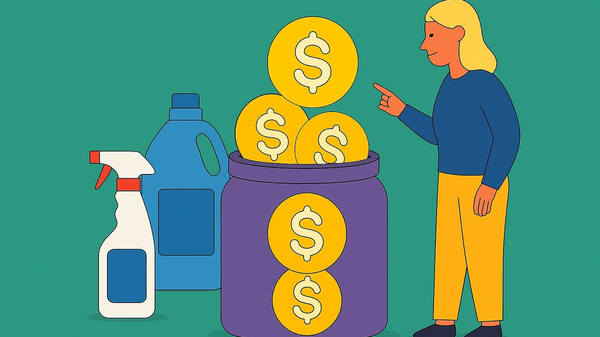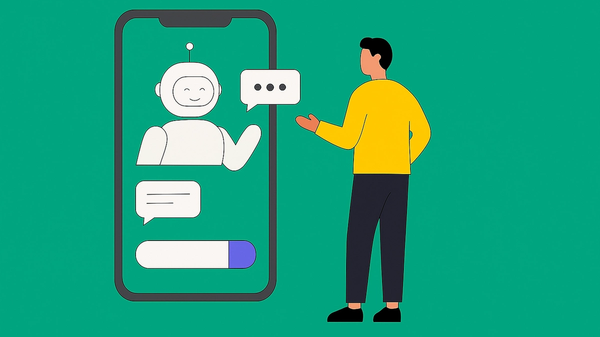Highlights
- Use the template below to calculate whether it’s better to put money towards your mortgage or invest
- See what to consider beyond the numbers
- Determine your best decision!
Like almost every Canadian with a mortgage, I’ve spent the past few years wincing every time I look at the rates.
It’s going to cost a heck of a lot more than when we signed back in 2020 - as it will for almost everyone!
The Bank of Canada says that by the end of 2026, “virtually all mortgage holders” will have renewed at a higher rate and “may face significantly higher payments”.
Things are looking up though!
Even though the good ol’ days of mortgages under 2% are gone, thankfully the rates are sloooooowly coming down.
But are they low enough to make a mortgage worthwhile? Or is it better to put as much as you can towards it - even if it means draining your investments?
If you’ve been wondering that yourself, follow along and do this “back of the napkin” calculation to see your best course of action.
There are tons of variables so it’s not a perfect science, but it’ll get you in the ballpark!
I’m basing these numbers off of a 5-year fixed mortgage.
I might go 1-year fixed and see where things are after that (hopefully the rates come down!), but that’s another conversation for another day.
Let’s dive in!
Get your template!
Log into your Google account (like your Gmail or Google Drive account) and click the button below to save an editable copy of the template to your Drive.
You’ll only need to fill in the yellow fields, and the rest will calculate auto-magically!
Step 1: See how much you have left on your mortgage
Your statement should say how much you’ll have left to owe by the time your mortgage is up, and if you don’t see it just ask your mortgage broker.
In our case, we’ll have $330,000 left to pay for the house.
(And just for fun because I’m sure you want to know - our mortgage was at a sweet 1.76%. Ohhhh, those were the days!)
➜ Action step: Put the amount owing in Step 1 of your template:
Step 2: Calculate how much you’d make by investing
Take how much you’d put towards the house and run it through a compound interest calculator.
We could pull money out of our retirement investments to cover the house - but it would set us back in our retirement savings. A LOT.
I did the calculation using the full $330,000, and chose 20 years because that’s how long we’d have the mortgage for.
In the compound interest calculator put the monthly contribution as $0, because you only want to see the growth of the money you’d put towards the house.
Set the estimated interest rate to 7%.
Why 7%? Because over time, the average yearly return of the S&P 500 is 10% - and we remove a bit to account for inflation.
And if this sounds like a bunch of gobbledygook, it’s ok! Coming up, we’ll be creating tons of great content to help you out.
Here’s what that looks like…
1.2 million? I like the sounds of that!
➜ Action step: Put your investment projection into Step 2 of your template:
Step 3: See how much you’ll spend on interest
Use this calculator to get a rough estimate of how much you’ll spend on mortgage interest.
I put $330,000 and used the 20-year timeframe again.
Based on the current rates and what friends are signing at, I used an interest rate of 5% for this calculation.
So we’d pay about $192,685 in interest.
This is just an estimate since chances are the rate will be different when we resign in another 5 years (hopefully lower?!), but it gives a good idea.
➜ Action step: Add the interest you’d pay into Step 3 of your template:
Step 4: Find out how much the mortgage really costs
The calculator added what’s left on the house plus the interest to get $522,685.
Ooph, that’s a big chunk o’ change.
➜ Action step: Scroll down to Step 4, and see your total mortgage cost calculated auto-magically!
Step 5: See how much you’d be ahead by investing
The calculator shows how much you’d keep after removing your total mortgage cost (Step 4) from your investment projection (Step 1).
We’d be at ¾ of a million - I’ll take it!
➜ Action step: Scroll down to Step 5, and see your total investment projection automatically calculated!
Step 6: Calculate your new monthly mortgage payment
Now we need to know how much we’ll be paying each month.
I used the BMO “Renew” calculator to find that our payments would now be $2,169 - a far cry from what we’re currently paying!
➜ Action step: Put your monthly mortgage payment estimate into Step 6 of your template:
Step 7: Calculate catching up on investments after paying off the house
There’s the thought that you can pay off the house, and then invest what you would’ve spent each month on the mortgage.
So let’s try it!
Go back to the compound interest calculator and plug in your monthly payment for that same amount of time.
This time your initial investment is $0, since you’ll be starting from scratch.
Keep this window open, because we’ll come back to these results in the next step.
➜ Action step: Put your investment catch up projection into Step 7 of your template:
Step 8: See the total cost of paying off the house & catching up
We’re just about done!
Go back to your compound interest calculator and scroll down past the results and graph and click the button that says “Show table”.
Scroll to the bottom of the table and find the amount of your total contributions (it’s in the bottom right corner).
➜ Action step: Put the total investment contribution into Step 8 of your template. It’ll calculate the total cost of paying off your house and catching up on investments:
Step 9: See the difference between paying off the house and catching up, and your total investment projection
If it’s a positive number, it’s better to invest.
If it’s a negative number, it’s better to put money towards the house.
In my case, it would cost about $96,250 more to pay off the house and try and catch up.
➜ Action step: Scroll down to Step 9, and see how much you’ll be ahead by investing instead of paying off your house:
So what’s the right choice?
In our case, we’re going to stay invested and keep paying the mortgage.
“Numbers talk” as they say, and we’ll be ahead by about 100K by investing instead of paying off the house.
Time in the market is magic, so we want to give our money as much time to grow as possible!
We started self-investing a few years ago and haven’t looked back.
With all the tools available now like Questrade and Passiv, it’s so easy!
But what if your investment returns are less than 7%?
Welllll, that changes things.
You can redo the numbers based on your average rate of return and see where you stand.
(Basically, your returns need to be at least .25% higher than your mortgage rate for investing to be worthwhile)
If you're not reaching the “average benchmark” of 7%, it’s a sign you should look into your investment strategy.
That’s a whole other conversation - but if you’re new to self-investing and want the easiest way to get started, check out this post where we cover 2 of the most popular all-in-one investments.
This is a totally personal decision
Now you know my choice, but it may not be the right one for you. And that’s great! Finding your best move is the whole point of doing this.
You might want to continue with your mortgage, or you may find yourself wanting to pay off the house.
Even though the math is in favor of keeping the mortgage, it would be amazing to be free of monthly mortgage payments!
And of course the stock market isn’t a guarantee - but you definitely have to pay off your mortgage. So there’s that too.
No doubt that the emotional benefit of having your house paid off is huge. (Not to mention the bragging rights of casually dropping into a conversation, “Oh yeah, my house is paid off!”)
Make a decision that works for you
Now you can make a well-informed decision since you know what you’re looking at either way.
Both strategies have their merits, so you’re good no matter which direction you go with. Just choose the option that works best for you, your goals, and helps you sleep best at night!


